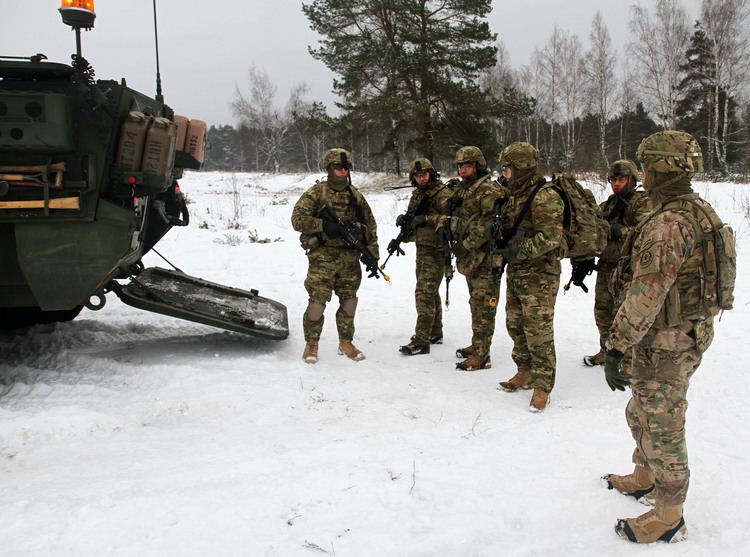 | ||
Operation atlantic resolve overview
Operation Atlantic Resolve are ongoing efforts in response to Russia's actions in Ukraine, mainly the War in Donbass. It is funded under the European Reassurance Initiative. All U.S. efforts in support of NATO fall under the umbrella of Operation Atlantic Resolve. The U.S. took several immediate steps to demonstrate solidarity with NATO, such as augmenting the air, ground and naval presence in the region, and enhancing previously scheduled exercises. The U.S. is taking measures to enhance NATO military plans and defense capabilities and remains committed to maintaining a persistent presence in Eastern Europe.
Contents
Road march
In the middle of March 2015, a US Army spokesman in Wiesbaden announced that a convoy of armored fighting vehicles (amongst them Strykers) would – after manoeuvres in Poland, Estonia and Lithuania – return via road to their garrison at Vilseck. The roadmarch started a week later.
Assets
The aerial assets are mostly deployed to Ämari Air Base, Graf Ignatievo Air Base and Papa Air Base.
Air Force
The first aerial units were the 159th Expeditionary Fighter Squadron (159th EFS) with McDonnell Douglas F-15C Eagle's and the 123d EFS with F-15C's and a single F-15D from April 2015 who stayed for six months.
This was added to by the following units:
Army
The new shipment of forces - 3,500 troops from the 4th Infantry Division, 87 tanks and 144 Bradley fighting vehicles - will gather first in Poland, then fan out across seven countries from Estonia to Bulgaria. They will be headquartered in Germany.
An American armored brigade is based in Żagań in western Poland alongside a Polish armored division. The American soldiers rotate through deployment every nine months, but their equipment is permanently based there.
Reactions
82% of Czechs approved and supported the US Army-NATO convoy that partook in Operation Dragoon Ride, according to an opinion poll that was conducted by the independent STEM agency in 2015.
A NATO deployment in the early January of 2017 was welcomed by Polish officials which described it as a necessary response to Russian military exercises near its border and its military intervention in Ukraine and members of the public as the materiel crossed into south-western Poland from Germany. The same deployment sparked protests in Germany and prompted a critical reaction among the country’s centre-left political parties, but was defended by the country’s ruling Christian Democrat Party (CDU) coalition and German military officials. An article about the deployment that was published by the Donbas News International (DNI) agency and its subsequent circulation in the Western conspiracy-theory cybersphere and Russian mediasphere was cited as an example of the creation and spread of fake news. An editorial by the Pittsburgh Post-Gazette cautioned anyone against using the deployment as a domestic political tool.
